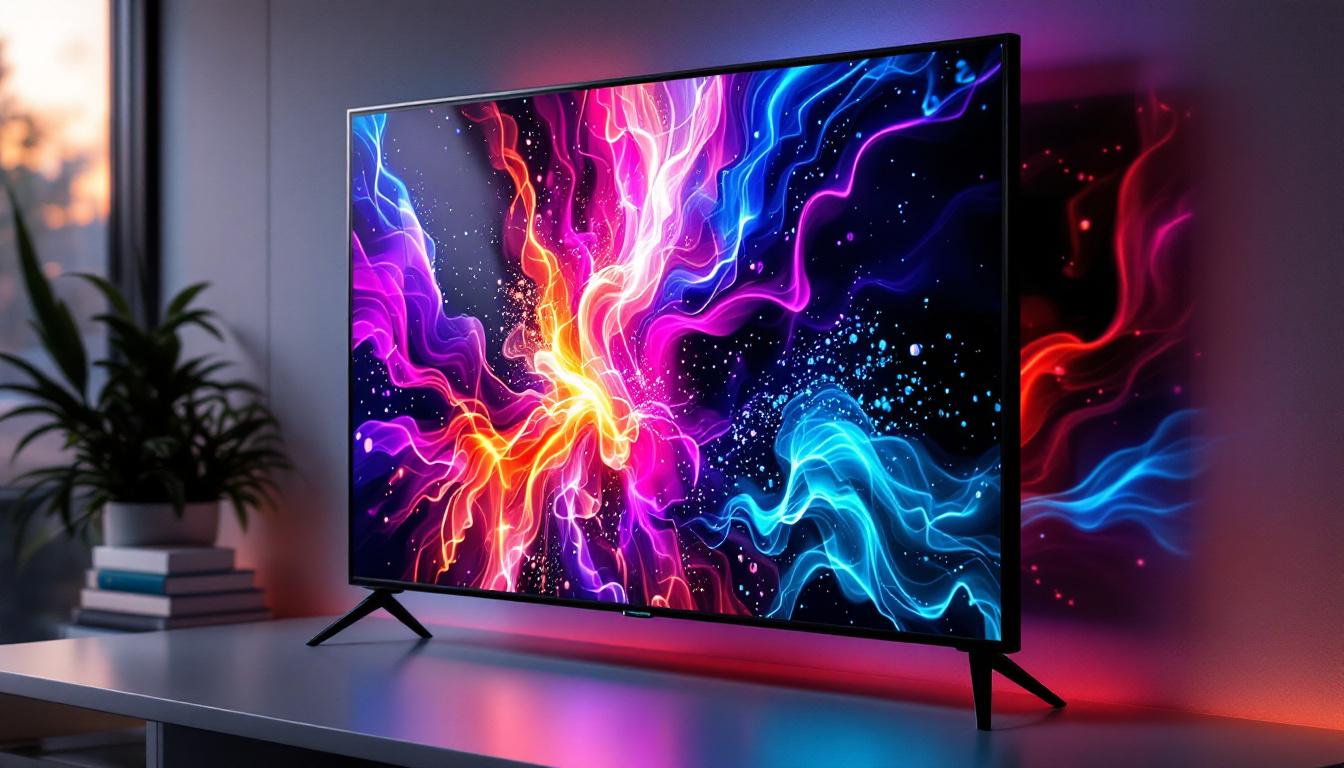LED TV vs LCD: LED Display Explained
The world of television technology has evolved significantly over the years, leading to a myriad of options for consumers. Among these options, LED and LCD TVs often come up in discussions, as they are two of the most popular types of displays available today. Understanding the differences between LED and LCD technologies can help consumers make informed decisions when purchasing a new television. This article delves into the nuances of LED and LCD displays, comparing their features, advantages, and drawbacks.
Understanding LCD Technology
Liquid Crystal Display (LCD) technology has been around for several decades and is widely used in various electronic devices, including televisions. LCD screens utilize liquid crystals sandwiched between two layers of glass or plastic. When an electric current passes through these crystals, they align in a way that allows light to pass through, creating images on the screen.
How LCD Works
In an LCD television, the display relies on a backlight, typically made of fluorescent lamps, to illuminate the liquid crystals. The backlight shines through the liquid crystals, which modulate the light to produce images. The color and brightness of the images are controlled by varying the voltage applied to the liquid crystals, allowing for a wide range of colors and brightness levels. This modulation is crucial for displaying everything from vibrant, colorful animations to subtle, muted tones in dramatic films.
Moreover, advancements in LCD technology have introduced features such as edge-lit and full-array backlighting, which enhance the overall picture quality. Edge-lit displays use LEDs positioned along the edges of the screen, while full-array displays have a grid of LEDs behind the entire screen, allowing for more precise control over local dimming and brightness. This evolution has significantly improved contrast ratios and color accuracy, making LCDs more competitive with newer technologies.
Advantages of LCD Technology
One of the primary benefits of LCD technology is its energy efficiency. LCD TVs consume less power compared to older CRT models, making them a more environmentally friendly option. Additionally, LCD screens are generally thinner and lighter, allowing for easier installation and placement in various settings. This sleek design has made LCDs a popular choice for wall-mounted setups, where aesthetics and space-saving are essential considerations.
Another advantage is the longevity of LCD panels. With proper care, an LCD TV can last for many years without significant degradation in picture quality. Furthermore, LCD technology is less prone to screen burn-in, a common issue with some other display technologies. This durability makes LCDs a reliable choice for households where the television is used frequently for extended periods, such as during movie marathons or gaming sessions.
Drawbacks of LCD Technology
Despite its advantages, LCD technology does have some drawbacks. One of the most notable issues is the limited viewing angles. Colors and brightness can shift when viewed from the side, which can be a disadvantage in larger rooms where viewers may not be sitting directly in front of the screen. This limitation can affect the overall viewing experience, particularly in social settings where multiple viewers gather around the TV.
Additionally, while LCD TVs can produce vibrant colors, they may struggle to achieve the same level of black depth as other technologies, such as OLED. This can result in a less immersive viewing experience, especially in darker scenes. The contrast between dark and light areas may not be as pronounced, which can detract from the visual impact of films and video games that rely heavily on shadow and light dynamics. As a result, consumers often weigh these factors when deciding between LCD and other display technologies, considering their specific viewing habits and preferences.
Introducing LED Technology
Light Emitting Diode (LED) technology is often confused with LCD, but it is essential to note that LED TVs are essentially a type of LCD TV. The primary difference lies in the backlighting method. Instead of using fluorescent lamps, LED TVs use light-emitting diodes to illuminate the liquid crystals.
How LED Works
LED televisions can be categorized into two main types: edge-lit and full-array. Edge-lit LED TVs have LEDs positioned around the edges of the screen, which allows for a thinner design. However, this configuration can lead to uneven lighting and less accurate color reproduction.
On the other hand, full-array LED TVs feature a grid of LEDs behind the entire screen, providing more uniform lighting and better control over brightness levels. This technology often includes local dimming, which enhances contrast by dimming specific areas of the screen while keeping others bright.
Advantages of LED Technology
One of the most significant advantages of LED technology is the improved picture quality compared to traditional LCDs. LED TVs offer better contrast ratios, deeper blacks, and brighter whites, resulting in a more dynamic viewing experience. This is particularly noticeable in scenes with high contrast, such as dark movies or bright sports events.
Another advantage is the energy efficiency of LED backlighting. LED TVs consume less power than their fluorescent counterparts, making them a more sustainable choice for consumers. Additionally, the lifespan of LED lights is generally longer, contributing to the overall longevity of the television.
Drawbacks of LED Technology
While LED technology offers several benefits, it is not without its drawbacks. One concern is the potential for blooming, which occurs when bright objects on the screen bleed into darker areas due to the local dimming feature. This can detract from the overall image quality, particularly in high-contrast scenes.
Furthermore, LED TVs can be more expensive than traditional LCDs, especially when opting for full-array models with advanced features. Consumers may need to weigh the cost against the benefits when considering their options.
Comparing LED and LCD TVs
When comparing LED and LCD TVs, it is essential to recognize that LED is a subset of LCD technology. Therefore, the comparison often boils down to the backlighting method and the resulting picture quality. Here are some key aspects to consider:
Picture Quality
Picture quality is one of the most critical factors when choosing a television. LED TVs generally provide superior picture quality compared to traditional LCDs due to their advanced backlighting technology. The ability to achieve deeper blacks and brighter whites enhances the overall viewing experience, making LED TVs the preferred choice for many consumers.
However, it is essential to note that not all LED TVs are created equal. Full-array models often outperform edge-lit models in terms of picture quality, so consumers should consider the specific features of each TV before making a decision.
Energy Efficiency
Both LED and LCD technologies are more energy-efficient than older CRT models. However, LED TVs typically consume less power due to their advanced backlighting systems. This can lead to lower electricity bills over time, making LED TVs a more economical choice for long-term use.
Price Point
Price is always a consideration when purchasing a new television. Generally, LED TVs tend to be more expensive than traditional LCDs, particularly when opting for high-end models with advanced features. Consumers should evaluate their budget and determine what features are most important to them before making a purchase.
Factors to Consider When Choosing Between LED and LCD
When deciding between LED and LCD TVs, several factors should be taken into account. These include viewing habits, room size, and budget constraints. Understanding these aspects can help consumers make a more informed decision.
Viewing Habits
Consider how the television will be used. For those who enjoy watching movies or playing video games in a dark room, an LED TV may provide a more immersive experience due to its superior contrast and color depth. Conversely, if the TV will primarily be used for casual viewing in a well-lit room, a traditional LCD may suffice.
Room Size and Layout
The size and layout of the room can also influence the choice between LED and LCD. If the television will be viewed from various angles, it may be worth investing in an LED TV with better viewing angles. However, if the viewing area is limited to a direct line of sight, either option may work well.
Budget Considerations
Finally, budget plays a crucial role in the decision-making process. While LED TVs offer enhanced features and picture quality, they often come at a higher price point. Consumers should assess their financial situation and determine what they are willing to spend on a new television.
Future of Television Technology
The landscape of television technology continues to evolve, with advancements in display technologies such as OLED and QLED entering the market. These technologies offer even better picture quality and energy efficiency, further complicating the decision for consumers.
Emerging Technologies
OLED (Organic Light Emitting Diode) technology is gaining popularity due to its ability to produce perfect blacks and vibrant colors. Unlike LED and LCD technologies, OLED panels emit their own light, eliminating the need for a backlight. This results in thinner screens and improved picture quality.
QLED (Quantum Dot Light Emitting Diode) is another emerging technology that enhances color accuracy and brightness. By using quantum dots, QLED TVs can produce a wider color gamut and improved brightness levels, making them a strong competitor in the market.
Consumer Trends
As technology advances, consumer preferences are also shifting. Many individuals are now prioritizing smart features, such as built-in streaming services and voice control, alongside picture quality. This trend is pushing manufacturers to innovate and integrate advanced technology into their products.
Conclusion
In the debate of LED TV vs. LCD, it is essential to recognize that LED is a type of LCD technology. While both options have their unique advantages and drawbacks, LED TVs generally offer superior picture quality and energy efficiency. Ultimately, the choice between the two will depend on individual preferences, viewing habits, and budget considerations.
As technology continues to evolve, consumers should stay informed about emerging trends and advancements in television technology. By understanding the differences between LED and LCD displays, individuals can make educated decisions that enhance their viewing experience for years to come.
Discover the Future of Visual Experience with LumenMatrix
As you consider the advantages of LED over LCD for your next television purchase, remember that the evolution of display technology doesn’t stop there. LumenMatrix is at the forefront of this innovation, offering a wide array of LED display solutions that transform any space into a dynamic visual spectacle. From Indoor and Outdoor LED Wall Displays to specialized solutions like Vehicle and Sports LED Displays, LumenMatrix tailors to every need, ensuring your message is not just seen, but truly experienced. Elevate your visual communication and captivate your audience with unparalleled clarity and impact. Check out LumenMatrix LED Display Solutions today and step into the future of display technology.































